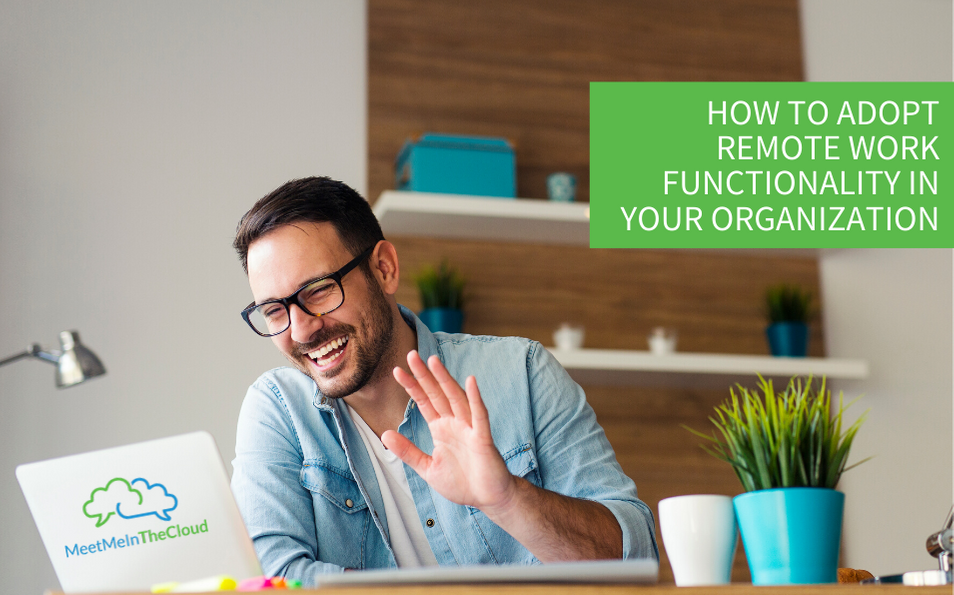When you want to adopt remote work functionality in your organization, you must also follow four best practices during the process to ensure successful adoption. When you follow these best practices, you will see many positive business outcomes.
Some businesses have failed at implementing these best practices into their remote work initiative, which causes them to eventually give up on remote work altogether, leaving its many benefits behind and potentially some disgruntled employees as well.
With prior planning and careful consideration, you will be able to start and utilize a functional remote work initiative that will greatly benefit your organization. Here’s how:
Adopt The Right Technology
A remote workforce is heavily dependent on technology to communicate. And communication is at the center of most businesses. Without the right technology, employees can become lost and unengaged because of a lack of communication.
Relying on email and phone calls alone is an outdated approach for distanced teams. Now, video conferencing software, collaboration platforms, and cloud services are vital for a remote team to be successful.
Not only is adopting the right technology important to your success, but so is a quick, successful adoption of those technologies by your workforce. If adoption is slow and time-consuming, employees can feel stranded and confused, unable to make work progress. But when adoption is quick and efficient, employees are involved and engaged. That’s why we offer Adoption Acceleration services.
Increase Security
With remote work, there is an increased need to improve security measures for your company’s data. Many work-from-home (WFH) policies allow employees to use personal devices for work, which means that your company’s cybersecurity needs are changing. In fact, even if you don’t technically allow employees to use personal devices for work, they likely are anyway, especially on mobile devices.
Every device is a potential entry point for hackers. As such, every device can be a weak point in your cybersecurity efforts and your cybersecurity posture is only as strong as your weakest endpoint. Your employees’ personal anti-virus protection or other cybersecurity efforts are no longer enough. Instead, they need enterprise solutions to protect your data.
In order to meet these increased cybersecurity demands, we recommend working with a cybersecurity Managed Service Provider (MSP) in order to receive guidance on how to best protect your company’s data. This is why we partner with CyberFort Advisors, an MSP, to bring you customized cybersecurity solutions.
Update Your Company Culture to Accommodate Remote Work
When your workforce works remotely, they still need a company culture to align their work. This helps them work on behalf of the company’s mission. It’s about teamwork, collaboration, and trust.
When you adopt remote work, you will need to change or add to your current company culture. It may involve new technologies and yearly retreats, but it has to include connections. When employees connect with one another, they are able to build trust with one another over time. This trust enables them to feel more at ease in their work because they know they can count on their teammates, even if they don’t see them every day.
Part of building trust is transparency. Even if you don’t see your employees, you still need to be transparent with them, which means communicating openly with them. A remote team should communicate just as much, if not more, than an in-office team.
Another important part of a remote work culture is being goal-oriented. Similar to an in-office setting, employees need to know expectations and goals, so make them clear and communicate them often. This helps develop a culture of growth and motivation, which is important for having an engaged, productive workforce.
Each company has a different culture, so your remote work culture will vary based on your organization’s mission, goals, and other factors. Involve your team in a discussion about how they want the company culture to adapt as it goes remote. Ask them what kind of support they will need before adopting the remote work opportunity and after. That will kick-off the connection and further build trust with them, which will start impacting your company culture right away.
Implement New Remote Work Policies
To make remote work actionable for your workforce, you will need to create WFH policies. These policies will establish the dos and don’ts of working from home and working remotely in general. It’s important to establish boundaries and best practices in these new policies to guide your workforce to productivity. Without these policies, you may come across problems that are avoidable, such as employees feeling overwhelmed or not completing tasks in a timely manner.
Common remote work policies include the following details:
- Expectations
- Responsibilities
- Who is eligible to WFH
- The process for requesting WFH privileges
- Regular working hours, if you want to establish them
- Expected online hours, if necessary
- Timekeeping process and recommendations
- Attendance and availability expectations
- How different technology will be used (tip: avoid duplicate uses)
- What expenses you will cover
When you create a WFH policy, you will likely want every employee to sign an agreement stating they agree to the terms within the policy. This helps ensure employees understand the policy before they work remotely.
Are You Ready to Make Remote Work Functional at Your Organization?
Most businesses considering remote work are going through extensive changes, which can be challenging for employees to adopt. To help you support your workforce during big changes, we offer Change Management services.

